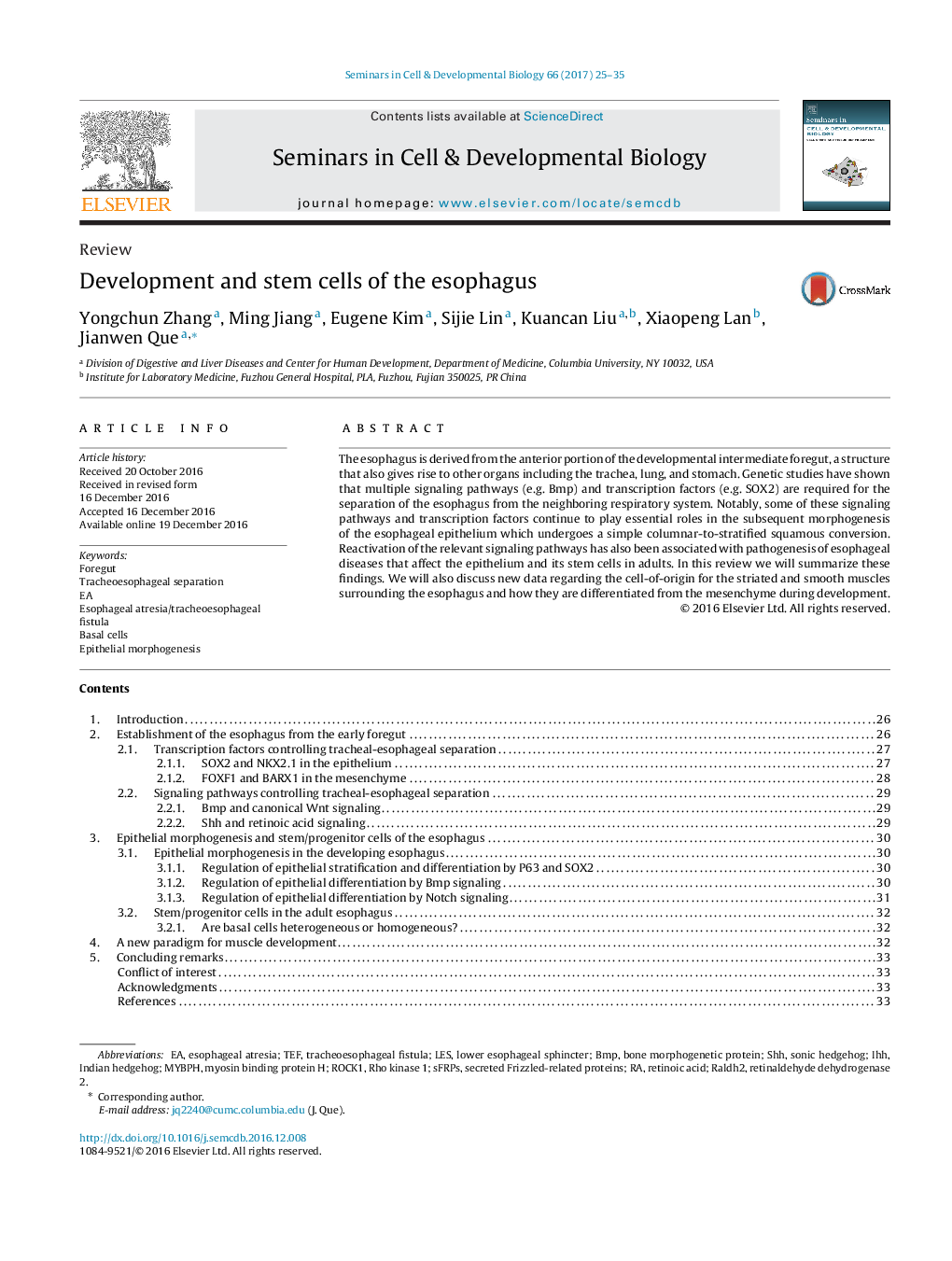| Article ID | Journal | Published Year | Pages | File Type |
|---|---|---|---|---|
| 5534879 | Seminars in Cell & Developmental Biology | 2017 | 11 Pages |
The esophagus is derived from the anterior portion of the developmental intermediate foregut, a structure that also gives rise to other organs including the trachea, lung, and stomach. Genetic studies have shown that multiple signaling pathways (e.g. Bmp) and transcription factors (e.g. SOX2) are required for the separation of the esophagus from the neighboring respiratory system. Notably, some of these signaling pathways and transcription factors continue to play essential roles in the subsequent morphogenesis of the esophageal epithelium which undergoes a simple columnar-to-stratified squamous conversion. Reactivation of the relevant signaling pathways has also been associated with pathogenesis of esophageal diseases that affect the epithelium and its stem cells in adults. In this review we will summarize these findings. We will also discuss new data regarding the cell-of-origin for the striated and smooth muscles surrounding the esophagus and how they are differentiated from the mesenchyme during development.
